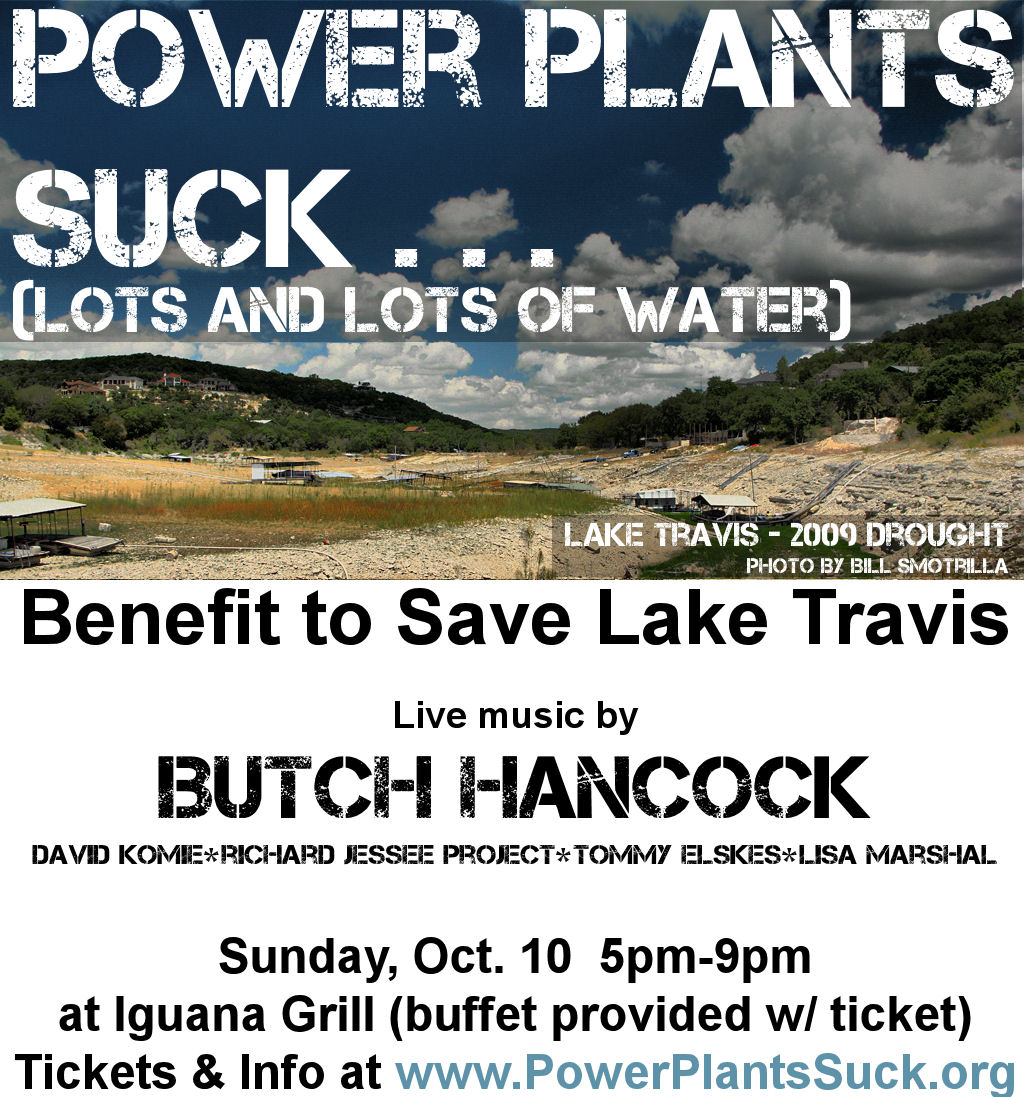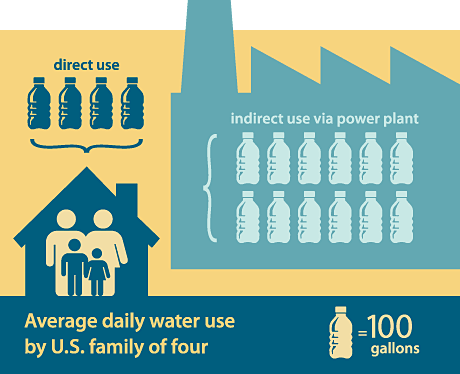In 2009, a drought nearly emptied Lake Travis. People living and working in the surrounding communities remember businesses closing up as the economic activity around the lake ground to a halt. In 2010, a new threat to lake levels and local businesses has emerged.
Despite rising temperatures and projections of less and less available water in our state, 3 unneeded power plants have been proposed that would suck more water – billions of gallons of water – out of the Colorado River. Fortunately, Public Citizen has joined forces with ReEnergize Texas, SEED Coalition, and the Lonestar Chapter of the Sierra Club to stop these plants from ever seeing the light of day.
On October 10th a new campaign will be launched, not with an activist rally or press conference on the steps of the capitol (both of which are fine ways to start a campaign), but with people enjoying good food and live music while watching the sun go down over Lake Travis. We’ll be entertained by such musicians as the legendary Mr. Butch Hancock, the Richard Jessee Project, Tommy Elskes & Lisa Marshall and David Komie. You’re invited to join us.
About the Issue
According to the State of the Market Report for 2009, produced for the Electric Reliability Council of Texas (ERCOT), Texas has more power than it currently needs, and new plants are already coming online. As our economy continues to grow, energy efficiency improvements and new renewable energy is offsetting the growth in energy demand, meaning we do not need new large scale power plants like those being proposed. A key finding in the report was that the Texas electricity market did not support entry for new gas, coal, or nuclear power plants.
But a few companies are attempting to build new coal and nuclear plants that, combined, would pull more than 26 billion gallons of water each year from the Colorado River.
Most people don’t realize that power plants together are the largest consumer of water in America. Unfortunately for Texas, our water laws have not been updated to keep pace with a rapidly growing population. In one case this means that a petcoke plant called Las Brisas could use an unexercised water right given to Corpus Christi in the year 1900 to supply the water it needs for cooling towers. In another case, the LCRA may have a very difficult time denying a permit to a coal plant called White Stallion because even though last year’s drought shows it’s common sense that we shouldn’t be granting new large water contracts, the law may give the LCRA limited options.
And remember, according to ERCOT’s study, there’s no need for additional baseload energy capacity. In fact, the report says that the market would not “support new entry” for coal or nuclear plants.
Who Stands to Lose
White Stallion and Las Brisas would together emit dangerous pollutants into the air, while the South Texas Nuclear Project increases the risk of a nuclear meltdown, local radioactive contamination, and contamination from long-lived radioactive waste. All that aside, just on the issue of water, numerous communities in Texas will be unduly burdened:
- Lake Travis and the Highland Lakes – Water for these proposed power plants would be drawn from the Highland Lakes. Huge power plants drawing water from the Colorado River will threaten lake levels in Central Texas, harming businesses that rely on lake visitors and home owners whose property values depend on the presence of the lakes.
- Rice Farmers in Southeast Texas – Near the end of its flow, the Colorado River comes into rice plantations, some dating back to the 19th century. Competition for water has created tensions between rice farmers in southeast Texas and lake dwellers in the Highland Lakes region. However, both communities stand to lose if these new power plants are built.
- San Antonio – In August of 2009, the San Antonio Water Service (SAWS) and LCRA were locked in a lawsuit over a project that would have provided water from the Colorado River to San Antonio. San Antonio has one of the lowest per-capita water usage rates in the country, but growing demand has forced the city to look for new sources of water.
- Texas Bays and Estuaries – While the law currently requires “environmental flows” to be prioritized, the LCRA will find itself under enormous pressure to give water to these power plants once they are operating. The cost of idling these plants will be astronomical, as could the cost of electricity for businesses and homeowners if they have to buy on the spot market when the plants are turned off. These pressures make many observers skeptical about whether environmental flows will truly be maintained.
Despite claims that these projects will bring needed jobs to the areas where they are built, the truth is that almost all of the jobs will be temporary construction jobs. Investing billions into projects that will create only a few hundred permanent jobs makes little economic sense. Far more jobs can be created through renewable energy, as this report by former Deputy Comptroller Billy Hamilton demonstrates.
For more about the specific plants, as well as to learn about the event, go to www.PowerPlantsSuck.org. You should visit us on Facebook and, if you like what you see, click “Like” (duh) so you can keep up with this campaign leading up to the event and beyond.
###
By promoting cleaner energy, cleaner government, and cleaner air for all Texans, we hope to provide for a healthy place to live and prosper. We are Public Citizen Texas.




